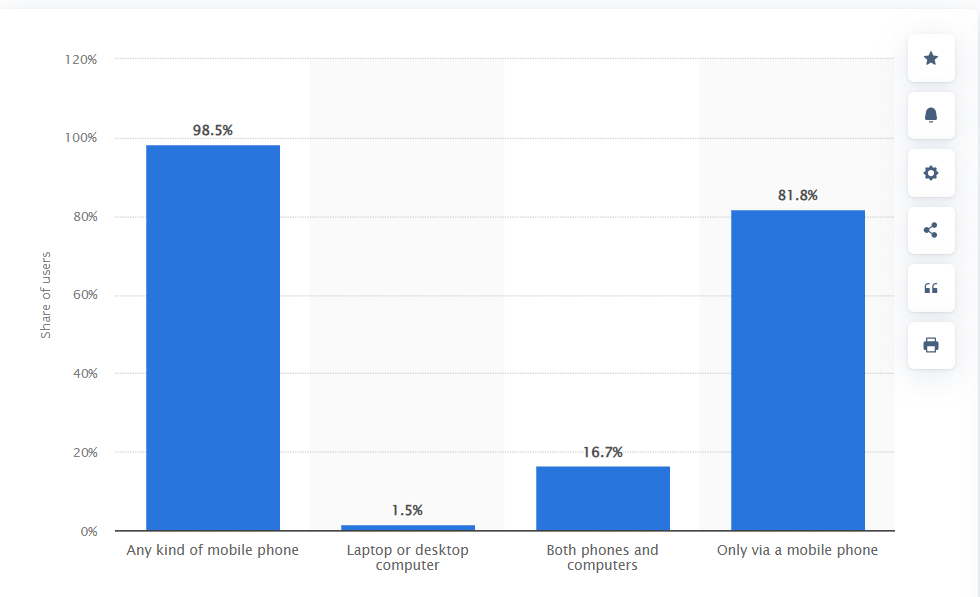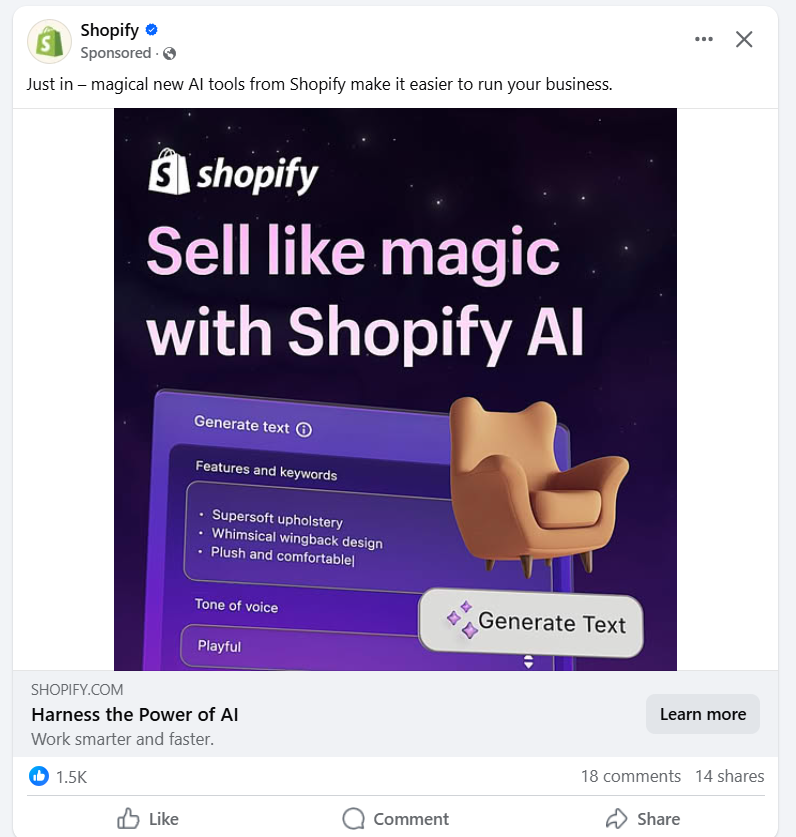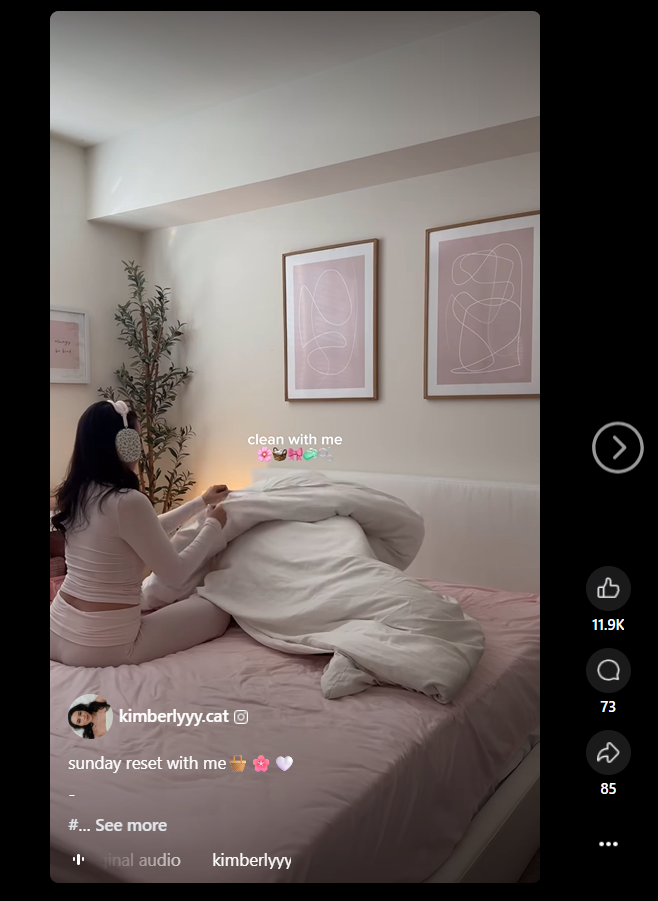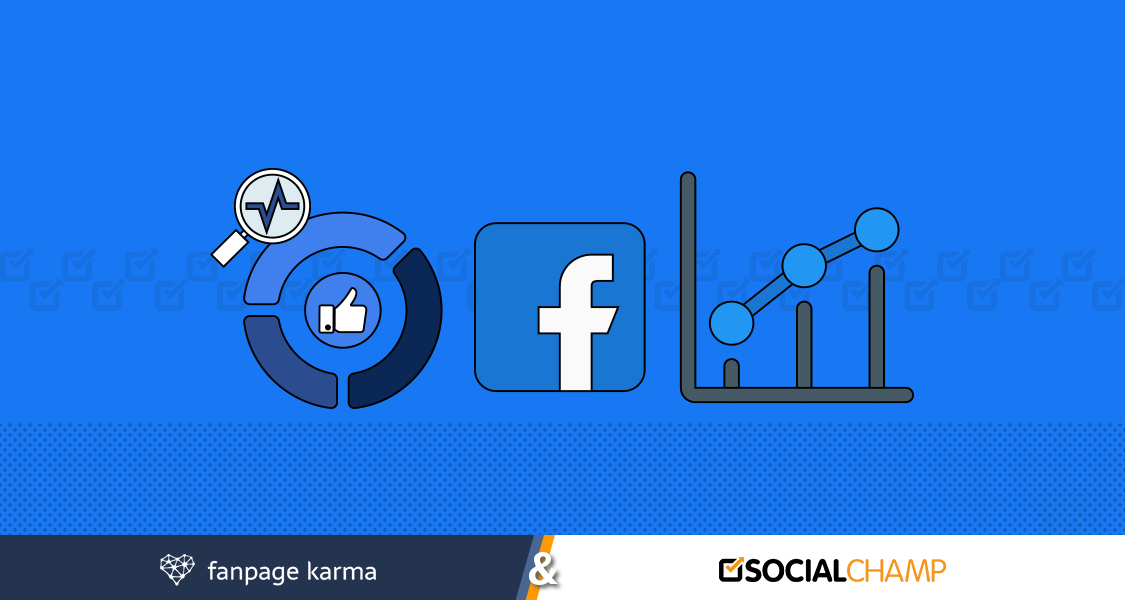If you think Facebook’s best days are an old story, think again.
With over 3.1 billion monthly active users, it continues to be the biggest social network in the world.
That means your audience is still there and in huge numbers.
But Facebook isn’t the same as it used to be. If you’re using the same strategy from the last decade, you’re likely falling behind.
That’s why staying updated with the latest Facebook stats is important.
Knowing what’s working can help you plan better campaigns, reach more people, and get better results from your content and ads.
In this blog, we’ve gathered the most useful Facebook stats for 2025, every marketer should know.
This information, combined with a Facebook scheduler, can be the perfect recipe to dominate this social media platform this year.
Ready to see what’s really going on with Facebook?
Let’s get into it.
CTA: Tired of Guesswork? Let the Data Drive.
Track, schedule, and optimize your Facebook posts with Social Champ — all backed by performance insights that actually matter.
Short Summary
- Facebook remains a dominant social platform in 2025, with billions of active users and strong content engagement across formats.
- The platform’s user base is diverse, with key audiences spanning multiple age groups, regions, and device preferences.
- Engagement is driven by authentic, fast-loading content, especially videos, Reels, and mobile-friendly formats.
- Facebook Ads continue to deliver strong ROI when backed by data-driven strategies, including precise audience targeting and performance tracking.
- Short-form video content like Reels is still a major force, offering high visibility, strong engagement, and cost-effective reach.
Facebook Stats Overview: Key Numbers That Define the Platform in 2025
Before we discuss who’s on Facebook and how they interact, it’s important to understand the platform’s foundation: its scale and activity level.
These core stats help paint a clear picture of Facebook’s ongoing role as a central hub for content, communication, and business activity.
Whether you’re managing a brand Page, using Facebook Shops, or tapping into its messaging features, these numbers set the stage for why it all matters in 2025.
Consider this your high-level snapshot of Facebook’s footprint and the reason it still deserves a seat at the strategy table.
- 2nd Most Visited Website: According to Semrush, Facebook is the 2nd most visited website after YouTube.
- Daily Active Users (DAUs): Approximately 2.1 billion users log in daily, indicating strong daily engagement.
- Monthly Active Users (MAUs): Facebook boasts 3.07 billion MAUs, reflecting its extensive Daily Active Users (DAUs):
- Facebook Groups: More than 1.8 billion users engage with Facebook Groups monthly, highlighting the platform’s role in community building.
- Facebook Marketplace: The Marketplace sees over 1.2 billion monthly users, making it a significant player in social commerce.
- Facebook Stories: Over 500 million users interact with Facebook Stories daily, indicating the popularity of ephemeral content.
- Facebook Watch: Facebook Watch has around 1.25 billion visitors every month.
- Total Video Watch Time: Users collectively watch over 100 million hours of video daily on Facebook Watch, emphasizing the platform’s video consumption.
- Facebook Messenger: Facebook Messenger facilitates over 947 million users around the world.
- Business Presence: Over 200 million businesses utilize Facebook’s tools, such as Pages and Shops, to connect with customers and drive growth.
- Revenue Growth: In 2024, Facebook generated a revenue of $164.5 billion.
Facebook User Demographics: Who’s Actually Using the Platform?
To run targeted and effective campaigns on Facebook, you need to know who’s using the platform.
The numbers in 2025 paint a clear picture: Facebook’s audience is wide-ranging, but certain segments stand out in usage, location, and behavior.
Here’s a breakdown of the most relevant demographic insights to help you identify and prioritize your target markets.
Facebook Demographics by User Age
Facebook’s largest age group remains users aged 25–34, but older age groups are closing the gap.
Interestingly, older users also tend to spend more time on the platform, making them valuable for sustained engagement.
Younger users, while still present, are slightly more passive in their daily activity.
- 18–24: 22.1%
- 25–34: 30.8%
- 35–44: 20.4%
- 45–54: 12.3%
- 55–64: 8.0%
- 65+: 6.4%
(Source: Oberlo)
Facebook Demographics by Gender
Men slightly outnumber women on Facebook, but the platform remains balanced enough to support campaigns targeting either or both.
This near-even split allows flexibility across a range of industries and content types.
- Male Users: 56.8%
- Female Users: 43.2
(Source: Statista)
However, the US completely flips the pattern, where women seem to dominate the user demographic by gender.
- Male Users: 61%
- Female Users: 78%
(Source: Pew Research Center)
Geographic Distribution
Facebook’s global footprint is massive, with especially high penetration in Asia-Pacific.
If your brand is expanding internationally, these numbers can guide your geo-targeting strategy.
Whether you’re scaling in established markets like the U.S. or tapping into Facebook’s largest markets.
By Country (Top 5)
-
- India: 581.6M users
- United States: 279.8M users
- Brazil: 175.1M users
- Indonesia: 174M users
- Mexico: 111.4M users
(Source: World Population Review)
By Region
- North America: 82.3%
- Latin America/Caribbean: 77.8%
- Europe: 67.6%
- Australia: 65.6%
- Middle East: 57.3%
(Source: Statista)
Device Usage
The overwhelming majority of Facebook users are on mobile. This shift should shape everything from your creative formats to your landing page experience.
Desktop-only users are now a negligible fraction of the audience.
- Mobile-only users: 98%
- Both mobile and desktop: 16.7%
- Desktop-only users: 1.5%

Facebook Distribution by Device
Facebook Engagement Stats: What’s Driving Interactions in 2025?
In 2025, Facebook’s engagement landscape will have evolved significantly.
The platform’s algorithm now prioritizes content that fosters meaningful interactions, such as comments and shares, over passive metrics like likes.
Understanding these shifts is crucial for marketers aiming to optimize their content strategies.
Overall Engagement Trends
- Average Engagement Rate: The median engagement rate on Facebook stands at 0.063%, indicating that while engagement is modest, it remains a vital metric for assessing content performance.
- User Interaction: The average Facebook user interacts with at least 10 posts daily through likes, shares, or comments, highlighting the platform’s continued relevance for user engagement.
Content Format Performance
- Video Posts: Video content receives 59% more engagement compared to other post types, making it the most effective format for capturing user attention.
- Photo Posts: Posts featuring images achieve an average engagement rate of 0.08%, outperforming other formats in terms of user interactions.
- Status Updates: Text-only status updates have an engagement rate of 0.04%, indicating that while less engaging than visual content, they still play a role in user interaction.
- Link Posts: Posts containing external links have the lowest engagement rate at 0.02%, suggesting that users are less inclined to interact with content that directs them away from the platform.
Featured Article: Facebook Ad Strategy: 15 Proven Tactics to Maximize Conversions in 2025
Algorithmic Influences
- Content Prioritization: Facebook’s algorithm favors content that encourages active engagement, such as comments and shares, over passive interactions like likes.
- Reels and Short Videos: Short-form video content, particularly Reels, has seen a significant uptick in engagement, with Reels achieving an engagement rate of 0.35% compared to a page’s followers.
- Facebook Live stats: Live streaming continues to be a powerful tool, generating 6 times more interactions than pre-recorded videos, emphasizing the value of real-time content.
Facebook Advertising Stats Every Marketer Should Know
In 2025, Facebook remains one of the most powerful platforms for digital advertising, particularly for brands looking to scale with precision and impact.
From cost-efficiency to audience behavior, here’s what you need to know before launching your next campaign.

-
Strong ROI for Most Advertisers
Facebook continues to deliver strong returns, especially for consumer-focused brands. Around 70% of businesses report Facebook as their highest-ROI advertising platform.
Thanks to its advanced targeting capabilities and integration across the Meta ecosystem, businesses, especially in e-commerce, retail, and services, continue to report strong results.
With over 8 million active advertisers, Facebook holds its ground as a staple in digital marketing strategies.
If your goal is to convert casual browsers into loyal customers, Facebook Ads are still a top-performing channel.
-
Competitive Ad Costs: CPM, CPC & CPA
Facebook Ads remain cost-efficient in 2025. The average CPM (cost per 1,000 impressions) is around $8.96, making it accessible for both small and large campaigns.
When it comes to CPC (cost per click), the average is about $0.58, though this varies by industry. For example, apparel brands see lower CPCs, while finance and insurance sectors often pay more per click.
As for CPA (cost per action), the platform averages $7 – $55, with industries like education seeing rates under $7.85 and tech services paying upwards of $50 per action.
-
High Conversion Rates in the Right Segments
Across all industries, the average Facebook Ads conversion rate is 9.21%, a strong figure compared to other platforms.
Fitness studios tend to perform exceptionally well with conversion rates over 14%, while the tech industry averages just over 2.3%.
These benchmarks highlight the importance of industry-specific targeting and optimization.
(Source: Wordstream)
-
Insights Into Audience Behavior
Audience behavior on Facebook is evolving, but some key patterns remain consistent.
Around 50% of the time users spend on the platform is dedicated to video-making formats like Reels, and in-stream video ads are more important than ever.
Additionally, 60% of users use Facebook to discover new products, making it the second-most popular platform for product discovery.
According to Meta, a significant portion of shoppers in the Household Staples (59%) and Media & Entertainment (63%) categories use Facebook for their shopping decisions and activities.
These behaviors suggest that while the feed is crowded, there’s still ample opportunity to connect if your content hits the right notes.
Dynamic ads, which automatically show relevant products based on user activity, are also a major driver of performance.
E-commerce brands can achieve higher conversion rates with this feature compared to standard static ad formats.
Featured Article: Marketing for Nonprofits: 20 Best Strategies to Increase Awareness & Donations in 2025
How to Use Facebook Stats to Build a Smarter Social Strategy
Having the right data is one thing, knowing what to do with it is another.
Facebook’s 2025 stats give us a clear view of what users want, how they interact, and what types of content perform best.
Whether you’re a solo creator or managing a brand with a global audience, using these insights can help you build a smarter, more results-driven social media strategy.
Here’s how to turn Facebook stats into strategic actions.
-
Find Your Best Posting Times
There’s no single “magic hour” that works for everyone. The key is to figure out when your audience is most likely to see and engage with your posts.
These time windows tend to be pretty consistent week to week, and they’re the foundation for your posting schedule.
How to apply it:
- Review when your followers are online and active (check your Page Insights).
- Use those patterns to create a fixed weekly posting schedule.
- Be consistent. Showing up regularly trains your audience to expect and engage with your content.
How Social Champ helps:
Social Champ lets you schedule content in advance, with smart suggestions for optimal posting times based on past engagement.
You can plan out days or weeks at a time and never worry about posting late (or forgetting entirely).
-
Use A Mix of Different Content
Not all content performs the same, and Facebook’s algorithm knows the difference.
A smart strategy includes a mix of content types like videos, carousels, Reels, photo posts, links, and plain text, but it leans into the ones that consistently drive interaction.
How to apply it:
- Use your analytics to identify which content formats get the most clicks, shares, or comments.
- Build a repeatable mix — maybe three Reels a week, two carousels, and one link post.
- Avoid overloading your feed with only one type of content (like just promos or only links).
-
Speak to the Right People With Precision Targeting
Knowing who uses Facebook is step one; understanding how they behave is step two.
You likely have multiple audience segments with different priorities, so your strategy should reflect that diversity.
For example, A post that resonates with Gen Z won’t necessarily connect with middle-aged professionals.
How to do it:
- Segment your audience by factors like age group, gender, location, and interests.
- Then craft tailored messaging that addresses their specific needs.
- Use Facebook’s built-in audience tools or integrate with platforms like Social Champ to manage and test audience groups more effectively.
-
Post With Purpose, Not Just Frequency
Posting more often doesn’t automatically mean better results. It’s easy to flood your timeline with content that does little to drive meaningful interactions.
Instead, focus on intentional posting—each piece should have a purpose, whether that’s increasing engagement, driving clicks, or building brand awareness.
Map out goals for every post and measure its performance with that objective. Are you aiming for shares, comments, saves, or conversions?
These answers should guide not only what you post but also how you measure success.
-
Optimize Ads by Behavior, Not Just Demographics
It’s tempting to target ads by simple demographic filters, but behavior-based targeting is often more effective.
Pay attention to how users interact with content, what they like, save, or share, and tailor your ads accordingly.
Also, test different creative formats and messaging for each ad set. Monitor which combinations yield higher conversion rates, not just clicks.
And instead of relying solely on Facebook’s default suggestions, build lookalike audiences based on your top-performing customers or followers.
This way, your ad spend is going toward users who are more likely to convert, not just those who fit a generic profile.
-
Plan Campaigns, Not Just Posts
Posting random content day to day is exhausting — and usually ineffective. Instead, think in terms of campaigns: themed content around a product, event, season, or message.
How to apply it:
- Plan 1–2 major content campaigns per month.
- Each campaign should include a mix of visuals, stories, and calls-to-action.
- Align everything from copy to visuals around a clear message.
How Social Champ helps:
Use labels, content categories, and its visual planner to organize and track campaign elements from one place. You’ll see how everything connects, and keep your content cohesive.
-
Design for Mobile First, Always
The vast majority of users scroll Facebook on their phones, which means your content needs to stop the thumb mid-swipe. If it’s not mobile-friendly, it’s invisible.
How to apply it:
- Use vertical formats for video (like 9:16).
- Keep text short, scannable, and easy to read.
- Make sure links lead to fast, mobile-optimized pages.
-
Track What Matters and Cut What Doesn’t
Vanity metrics are misleading. While likes and reach can feel rewarding, they don’t always translate to business value.
Instead, focus on metrics that align with your core objectives, such as click-through rates, saves, website traffic, or product purchases.
How to apply it:
- Review top-performing posts monthly. Look at post type, topic, and engagement.
- Identify content patterns that lead to clicks, shares, or conversions.
- Drop the content that consistently underperforms, no matter how much you like it.
- Double down on the ones that meet your KPIs.
How Social Champ helps:
You get post-level analytics in one dashboard. No spreadsheet wrangling or platform switching. That makes it easier to spot trends and quickly shift your strategy in response.
-
Engage Like a Human, Not a Robot
People don’t go to Facebook to be sold to, they go to connect. Your brand should feel approachable and conversational, not robotic or overly polished.
How to apply it:
- Reply to comments and DMs promptly.
- Show behind-the-scenes moments or casual updates.
- Use real voices in your captions. Be helpful, witty, or warm, whatever fits your brand.

Wendy’s Responses to Commenters on Its Facebook Post How Social Champ helps:
The unified inbox brings all your Facebook messages and comments together, so nothing gets lost and you never miss a chance to engage with your audience.
-
Stay Consistent With Your Posting Schedule
The best strategy in the world doesn’t matter if it’s not consistent. Posting every now and then won’t move the needle — you need a steady rhythm to stay relevant and build trust.
How to apply it:
- Set realistic content goals (e.g., 4–5 posts per week).
- Batch-create content in one sitting, rather than day-to-day.
- Use scheduling tools to eliminate last-minute scrambling.
How Social Champ helps:
Its intuitive calendar lets you schedule days or even months in advance. You can drag, drop, duplicate, and auto-schedule posts in just a few clicks, saving hours every week.
CTA: Post. Analyze. Repeat — Like a Pro.
Social Champ gives you the insights to fine-tune every post, Reel, and campaign.
Try for free today!
Facebook Video & Reels Stats: Is Short-Form Content Still King?
This year, Facebook video stats show that reels account for 40.8% of social users’ video consumption across Meta platforms.
Facebook’s algorithm is designed to keep users scrolling, watching, and tapping, and short-form video fits that mold perfectly.
It loads fast, delivers value quickly, and hooks attention within seconds.
It’s also easier for users to engage with casually, without the time commitment required for long-form content.
Short, high-impact videos are now a core format for discovery, interaction, and storytelling. They aren’t just being watched, they’re being preferred.

Engagement Metrics and Audience Demographics
Reels not only attract a large audience but also boast impressive engagement rates.
The average engagement rate for Reels is notably higher compared to other content types on Facebook. Reels are played over 200 billion times daily across Facebook and Instagram.
This indicates that users are more likely to interact with Reels, making them a valuable tool for content creators and marketers.
Mobile Optimization and Viewing Habits
With the majority of Facebook users accessing the platform via mobile devices, optimizing Reels for mobile viewing is essential.
Vertical videos, typically under 15 seconds, are particularly effective in capturing the mobile audience’s attention.
Additionally, a significant percentage of users watch videos without sound, making it crucial to include captions or text overlays to convey the message effectively.
Monetization Opportunities
Facebook has introduced various monetization features for Reels, allowing creators to earn revenue through their content.
Moreover, reels ads have a 35% higher click-through rate (CTR) compared to other video ads.
These features include ad placements and partnership opportunities, providing creators with incentives to produce high-quality Reels.
What Type of Video Content Works Best?
The best-performing videos on Facebook share one trait: they get to the point. Here’s what typically drives engagement in 2025:
- Hook within 3 seconds – Whether it’s a bold visual, a question, or a promise of value, the first few seconds decide everything.
- Vertical orientation – Designed for mobile-first users who prefer full-screen viewing.
- Relatable themes – Content that taps into emotions, humor, or common pain points outperforms overly polished ads.
- Sound-optional storytelling – Since many users scroll with sound off, subtitles and on-screen cues are now standard.
Pairing video efforts with a platform like Social Champ can help track which Reels are contributing most to traffic or engagement, allowing you to refine your creative approach over time.
Conclusion
Building an effective Facebook marketing strategy in 2025 isn’t about chasing trends; it’s about understanding what the data is telling you.
From content formats and post timing to ad performance and audience behavior, every decision should be backed by insight.
That’s where Facebook stats become truly valuable.
By applying these insights consistently and leveraging tools like Social Champ to schedule, analyze, and optimize your efforts, you’ll be better positioned to grow your reach, deepen engagement, and drive meaningful results on the world’s largest social platform.
So, whether you’re creating Reels, running ad campaigns, or simply trying to post more consistently, let the stats guide your strategy—and turn numbers into real-world impact.




1 comment
John Smith
Insightful stats for digital marketers! Thanks for compiling this valuable information. It’s a treasure trove for 2023 planning